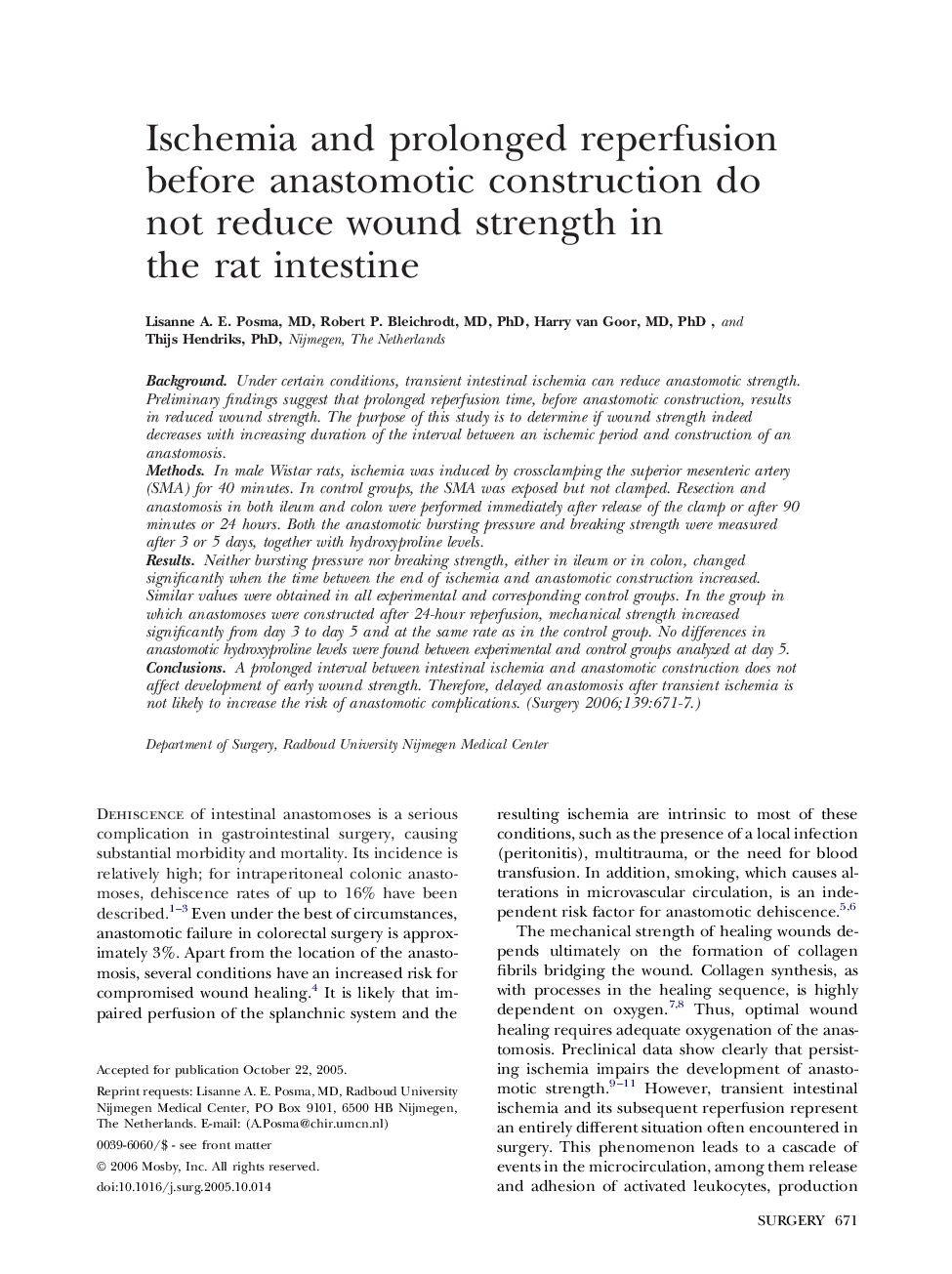| Article ID | Journal | Published Year | Pages | File Type |
|---|---|---|---|---|
| 4310079 | Surgery | 2006 | 7 Pages |
BackgroundUnder certain conditions, transient intestinal ischemia can reduce anastomotic strength. Preliminary findings suggest that prolonged reperfusion time, before anastomotic construction, results in reduced wound strength. The purpose of this study is to determine if wound strength indeed decreases with increasing duration of the interval between an ischemic period and construction of an anastomosis.MethodsIn male Wistar rats, ischemia was induced by crossclamping the superior mesenteric artery (SMA) for 40 minutes. In control groups, the SMA was exposed but not clamped. Resection and anastomosis in both ileum and colon were performed immediately after release of the clamp or after 90 minutes or 24 hours. Both the anastomotic bursting pressure and breaking strength were measured after 3 or 5 days, together with hydroxyproline levels.ResultsNeither bursting pressure nor breaking strength, either in ileum or in colon, changed significantly when the time between the end of ischemia and anastomotic construction increased. Similar values were obtained in all experimental and corresponding control groups. In the group in which anastomoses were constructed after 24-hour reperfusion, mechanical strength increased significantly from day 3 to day 5 and at the same rate as in the control group. No differences in anastomotic hydroxyproline levels were found between experimental and control groups analyzed at day 5.ConclusionsA prolonged interval between intestinal ischemia and anastomotic construction does not affect development of early wound strength. Therefore, delayed anastomosis after transient ischemia is not likely to increase the risk of anastomotic complications.
